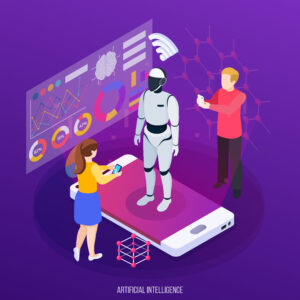Introduction

In today’s digital world, where information flows at lightning speed, Large Language Models (LLMs) have emerged as the engines driving intelligent systems. These models can write essays, generate code, answer complex questions, and even simulate human conversation with remarkable fluency.
But how are these models developed? What does it take to build such sophisticated systems? This article takes you through the essential steps of LLM development—from the first line of code to global deployment.
1. Collecting the Raw Material: Data
Every LLM begins its journey with data—massive, diverse, and carefully curated datasets. Data is the core ingredient that shapes the knowledge, accuracy, and capabilities of these models.
Data Sources:
-
Web Content: News websites, blogs, encyclopedias, forums, and user-generated content form the foundation of most LLM training datasets.
-
Books: Digitized versions of fiction, non-fiction, academic research, technical manuals, and historical texts provide rich context and diverse language styles.
-
Public Repositories: Data from open-source projects, including code repositories such as GitHub, are essential for models focused on programming tasks.
-
Domain-Specific Collections: Legal documents, medical journals, financial reports, and industry-specific publications help in fine-tuning models for specialized applications.
Processing Steps:
-
Cleaning: Removing spam, offensive material, incomplete documents, and nonsensical text.
-
Filtering: Selecting high-quality, informative content while excluding irrelevant or duplicated information.
-
Tokenization: Breaking text into manageable parts called tokens, which the model uses to analyze and predict patterns.
A meticulously curated dataset ensures that the LLM can grasp various linguistic structures, cultural contexts, and knowledge domains, enabling it to perform effectively in diverse scenarios.
2. Designing the Model: The Architecture Blueprint
With the data ready, the next critical step is building the architecture of the LLM. This is where theoretical design meets engineering innovation.
Key Components:
-
Transformer Architecture: This breakthrough design, first introduced in 2017, enables the model to process and understand relationships between words regardless of their position in the sentence.
-
Self-Attention Mechanism: Allows the model to “focus” on specific words or phrases in a sentence that are most relevant to the prediction or task at hand.
-
Multi-Head Attention: Facilitates simultaneous learning of different aspects of a sentence, improving context comprehension and accuracy.
-
Feedforward Layers: Enable complex transformations of the attention outputs, deepening the model’s understanding.
-
Positional Encoding: Adds information about the order of words, ensuring the model comprehends sentence structure and grammar.
3. Collecting the Raw Material: Data
Every LLM begins with data—lots of it. The goal is to expose the model to as much text as possible to help it learn the intricacies of human language.
Data Sources:
-
Web Content: Websites, blogs, and forums.
-
Books: Classic literature, technical manuals, and academic papers.
-
Public Repositories: Code libraries, research databases, and educational content.
-
Domain-Specific Data: Legal, medical, or financial documents for specialized models.
Processing Steps:
-
Cleaning: Removing harmful, biased, or low-quality content.
-
Filtering: Excluding duplicate or irrelevant text.
-
Tokenization: Breaking text into digestible pieces (tokens) for the model.
A diverse and high-quality dataset ensures the model can perform well across many topics and languages.
4. Designing the Model: The Architecture Blueprint
LLMs are powered by neural networks, specifically transformer-based architectures that excel in language understanding.
Key Components:
-
Attention Mechanism: Helps the model focus on relevant words in a sentence.
-
Layered Structure: Deep neural networks with dozens or even hundreds of layers, allowing the model to learn increasingly complex patterns.
-
Positional Encoding: Provides the model with a sense of word order and sentence structure.
Popular LLM families like GPT, Llama, and Claude are built on such architectures, with parameter counts reaching into the hundreds of billions.
5. Pretraining the Model: Learning Language from Scratch
Pretraining is where the real learning happens. The model is exposed to vast amounts of text and taught to predict words or phrases in context.
Training Objectives:
-
Next Token Prediction: Predicting the next word in a sentence.
-
Masked Language Modeling: Predicting missing words within a sentence.
-
Sequence Modeling: Learning relationships between words across longer passages.
Infrastructure:
-
High-performance GPUs or TPUs.
-
Distributed training over cloud platforms or supercomputers.
-
Specialized optimization techniques like mixed precision training and gradient checkpointing.
Training can take weeks or months and requires extensive energy and computing power.
6. Fine-Tuning: Making the Model Smarter
After pretraining, the model undergoes fine-tuning to specialize it for specific tasks or to improve its safety and performance.
Fine-Tuning Methods:
-
Supervised Learning: Using curated datasets for tasks like summarization, translation, or dialogue.
-
Reinforcement Learning with Human Feedback (RLHF): Incorporating human preferences to optimize responses.
This stage is crucial for making the model useful, safe, and aligned with human values.
7. Evaluation: Testing Model Performance
Before deployment, the model must pass a series of rigorous evaluations to ensure quality and safety.
Evaluation Approaches:
-
Automated Benchmarks: Tests like MMLU and SuperGLUE evaluate reasoning and language understanding.
-
Human Evaluation: Human reviewers assess responses for accuracy, tone, and relevance.
-
Bias and Safety Testing: Identifying and reducing harmful or biased outputs.
The goal is to confirm that the model is reliable, effective, and free from major risks.
8. Deployment: From Lab to Application
Once trained and evaluated, the LLM is ready to be deployed in real-world applications.
Deployment Methods:
-
APIs: Cloud-based services for developers and businesses.
-
On-Device Models: Smaller versions optimized to run on smartphones or laptops.
-
Edge Computing: Models running on specialized hardware in remote locations.
Optimization Techniques:
-
Quantization: Reducing model precision for faster computation.
-
Pruning: Removing less critical parts of the model.
-
Distillation: Creating smaller models that retain the essential capabilities of large ones.
These methods ensure that LLMs can run efficiently, even at scale.
9. Ethical AI: Developing Responsibly
LLM development isn’t just about performance—it’s also about responsibility.
Ethical Priorities:
-
Bias Mitigation: Reducing harmful stereotypes and unfair outputs.
-
Privacy: Avoiding memorization of sensitive personal data.
-
Transparency: Clearly stating the model’s limitations and risks.
Leading organizations also involve external auditors and public researchers to ensure accountability.
10. The Road Ahead: The Future of LLMs
LLM development is accelerating rapidly, and new trends are shaping the future:
-
Multimodal Models: Combining text, images, video, and audio for more comprehensive capabilities.
-
Smaller, Personalized Models: Custom LLMs tailored to individuals or small teams.
-
Autonomous Agents: LLMs that can reason, plan, and act independently in complex environments.
-
Open-Source Development: More community-led projects making LLM technology widely accessible.
As these trends continue, LLMs will become even more powerful, versatile, and integrated into everyday technology.
Conclusion
LLM development is a complex yet fascinating process that blends science, engineering, and ethical considerations. From gathering massive datasets to fine-tuning performance and ensuring safety, every step plays a critical role in shaping the intelligence of these digital systems.
As LLMs become more advanced, they are set to change how we work, communicate, and innovate—powering a future where intelligent language tools are everywhere.


